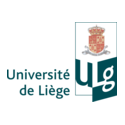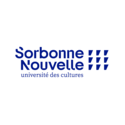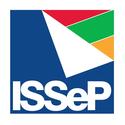In short
People who report electrohypersensitivity (EHS) describe symtoms that they attribute to exposure to electromagnetic fields. Sciensano is coordinating a study on electrohypersensitivity through an exposure protocol built in collaboration with people suffering from EHS. The exposure system is designed to generate radiofrequencies and 50 Hz fields, comparable to signals and intensities encountered in everyday life, especially in urban environment and offices. The experiment phase was first scheduled between April 2019 and August 2020. Thanks to the support of the Walloon Public Service of Agriculture, Natural Resources and Environment (Envi-EHS coordinated by ISSeP-Liège), the test period is extended until March 2022.
Results of both the ExpoComm and Envi-EHS projects will be communicated in autumn 2022.
Project description
According to WHO (2007) and the French Agency for Food, Environmental and Occupational Health & Safety (Anses, 2018), EHS is a self-reported hypersensitivity to electromagnetic fields (EMF) to which non-specific functional symptoms are attributed. However, to date, there is no evidence of an existing biological or physiological mechanism that could explain the onset of these symptoms. In addition, double-blind provocation studies have so far shown no causal relationship between EMF exposure and the symptoms. Nocebo’s responses could be involved. A nocebo response means that conscious or unconscious anticipation of the adverse effects of exposure can induce reactions, rather than exposure itself.
The nocebo response hypothesis raises questions about the relevance of new provocation studies. However, Anses (2018) recently reaffirmed their interest, while recommending that the methodological limits of previous studies should be considered. In addition, although EHS people may feel reluctant to be exposed to EMF, many believe that double-blind provocation experiments are necessary and could help them to prove their attributions. In our attempt to develop an innovative protocol that considers the specific needs and characteristics of EHS people, we conducted a collective reflection with EHS volunteers. The challenge was to design an experimental protocol that could trigger the onset of symptoms, while being acceptable to EHS participants and the scientific community.
The co-designed exposure protocol should aim at assessing the possible link between EMF exposure and symptoms onset, while minimising the possibility that nocebo responses hide possible physiological reactions to EMF exposure.
In order to use exposure conditions as close as possible to the environment, the project consists of using real sources: mobile phone base stations, WLAN access point, DECT base station and 50 Hz current loop. All sources are be activated at the same time, in order to reproduce a real environment.
References :
- Anses. (2018). Hypersensibilité électromagnétique ou intolérance environnementale idiopathique attribuée aux champs électromagnétiques. Rapport d’expertise collective (Saisine n°2011-SA-0150). Maisons-Alfort.
- World Health Organisation. (2007). Extremely low frequency fields. Environmental Health Criteria N° 238.
Sciensano's project investigator(s):
Service(s) working on this project
Partners







